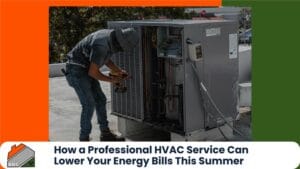Switching to solar energy is a smart investment, but choosing the right solar contractor is crucial for ensuring a smooth installation and long-term energy savings. With so many providers available, it’s essential to find a reputable, experienced contractor who can deliver high-quality service. This guide will walk you through the key steps to selecting the best solar contractor for your needs.
Step 1: Research and Identify Potential Contractors
- Online Research: Search for local solar contractors, read online reviews, and visit their websites to understand their offerings.
- Ask for Recommendations: Speak to friends, family, or neighbors who have installed solar panels and get their feedback on their experience.
- Check Professional Associations: Look for contractors who are part of industry organizations like SEIA (Solar Energy Industries Association) or NABCEP.
- Visit Completed Projects: If possible, visit homes or businesses that the contractor has worked on to see the quality of their installations firsthand.
Step 2: Verify Credentials and Experience
A legitimate solar contractor should have the right credentials and a solid track record.
- License and Insurance: Ensure the contractor is properly licensed to operate in your state and carries liability and worker’s compensation insurance.
- NABCEP Certification: The North American Board of Certified Energy Practitioners (NABCEP) certification signifies expertise and professionalism in solar installations.
- Years in Business: More years in the industry generally mean more experience in handling different types of projects and overcoming challenges.
- Manufacturer Certifications: Some contractors are certified by specific solar panel manufacturers, ensuring they are trained to install those products correctly.
Step 3: Assess Their Reputation and Customer Feedback
A contractor’s reputation speaks volumes about their quality of work and reliability.
- Online Reviews: Read customer reviews on Google, Yelp, and the Better Business Bureau (BBB) to identify common concerns or praise.
- Customer Testimonials: Look for video testimonials or written case studies that provide insight into past projects and customer satisfaction.
- Check for Complaints: Verify with the BBB or state regulatory boards for any complaints filed against the contractor.
- Ask for References: A reputable contractor should be able to provide references from past clients who can share their experiences.
Step 4: Request and Compare Quotes
Comparing multiple quotes will help you find the best value for your investment.
- Request Multiple Quotes: Get at least three quotes from different contractors to compare pricing and offerings.
- Understand Pricing Structure: Ensure each quote includes a detailed cost breakdown, including equipment, labor, permits, and any additional fees.
- Compare Equipment Quality: Higher-quality solar panels and inverters may cost more initially but can provide better efficiency and durability.
- Look for Hidden Fees: Ask about any potential additional costs that may arise during installation.
Step 5: Evaluate Their Installation Process and Timeline
A good contractor should have a clear and transparent installation process.
- Project Timeline: Ask how long the project will take from contract signing to system activation.
- Permitting and Approvals: Ensure the contractor handles the necessary permits and inspections required by local authorities.
- Roof Inspection: A reputable contractor should conduct a thorough roof inspection to determine if it can support the solar panels.
- Installation Crew: Verify whether the installation is done by in-house employees or subcontractors.
Step 6: Check for Financing and Incentive Options
- Tax Credits & Rebates: Check for federal and state tax credits, as well as utility company rebates, that can reduce upfront costs.
- Loan vs. Lease Options: Understand the difference between purchasing a system outright, financing through a loan, or leasing a system from a provider.
- Power Purchase Agreements (PPAs): Some companies offer PPAs where you pay for the energy generated rather than the panels themselves.
- Net Metering Benefits: Ensure the contractor explains how net metering works and how it can help you save money by selling excess energy back to the grid.
Step 7: Review the Contract Carefully
Before signing an agreement, thoroughly review the contract terms.
- Warranty Coverage: Check the warranties for equipment (typically 20–25 years) and workmanship (usually 5–10 years).
- Payment Terms: Ensure payment milestones are clearly outlined and there are no unexpected costs.
- System Performance Guarantees: Some contractors offer production guarantees to ensure the system generates a minimum amount of energy.
- Cancellation Policy: Understand your rights if you decide to cancel the project before installation begins.
- Post-Installation Support: Clarify whether the contractor provides ongoing maintenance, monitoring, and troubleshooting services.
Conclusion
Ready to harness the power of the sun?
Let Building Better Construction guide you every step of the way. Whether you’re looking to reduce your energy bills, increase your property value, or contribute to a greener planet, we’re here to help. Contact us today and take the first step toward a brighter, more sustainable future!
Let’s build a better tomorrow—starting today!





